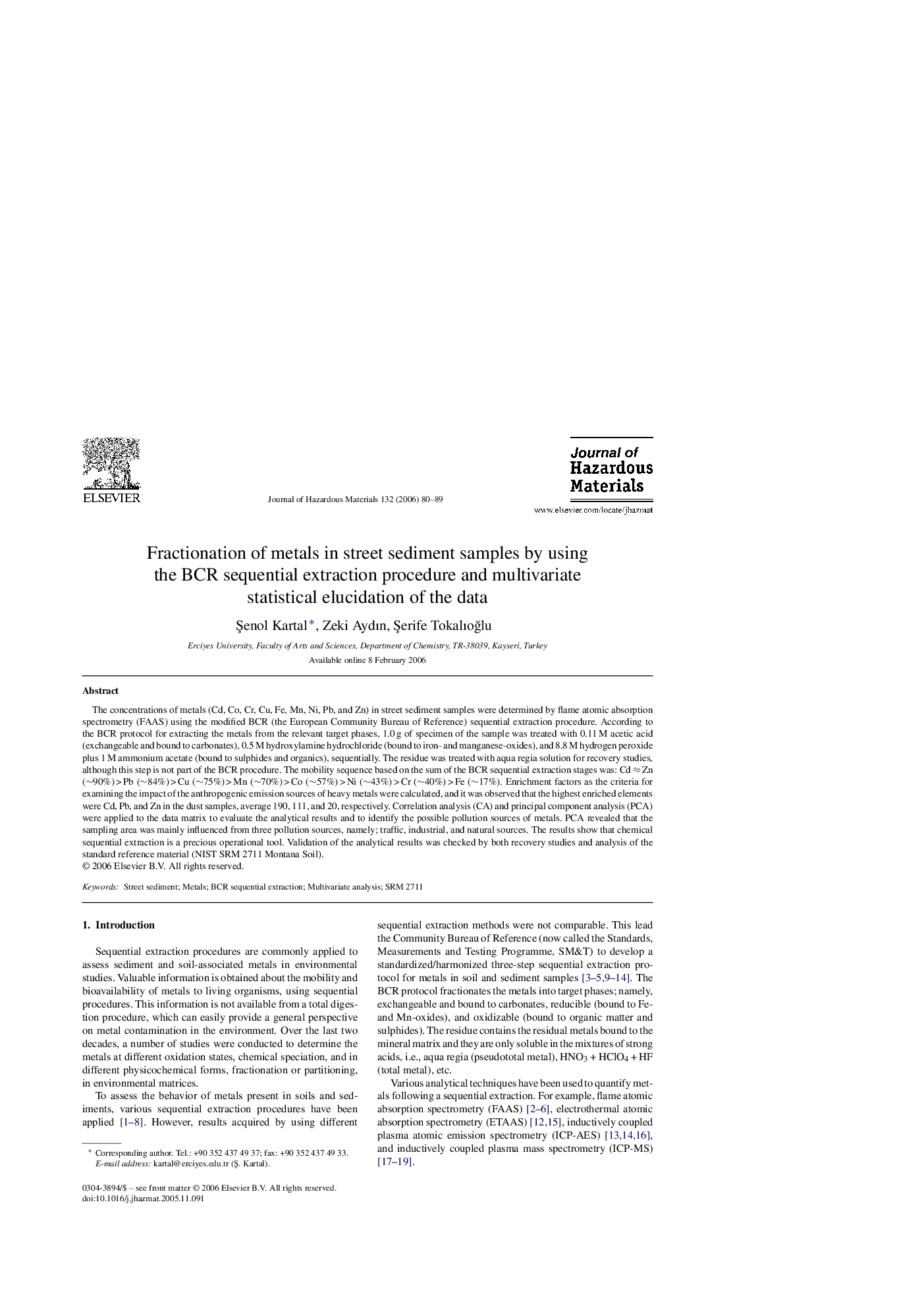| کد مقاله | کد نشریه | سال انتشار | مقاله انگلیسی | نسخه تمام متن |
|---|---|---|---|---|
| 585512 | 877914 | 2006 | 10 صفحه PDF | دانلود رایگان |

The concentrations of metals (Cd, Co, Cr, Cu, Fe, Mn, Ni, Pb, and Zn) in street sediment samples were determined by flame atomic absorption spectrometry (FAAS) using the modified BCR (the European Community Bureau of Reference) sequential extraction procedure. According to the BCR protocol for extracting the metals from the relevant target phases, 1.0 g of specimen of the sample was treated with 0.11 M acetic acid (exchangeable and bound to carbonates), 0.5 M hydroxylamine hydrochloride (bound to iron- and manganese-oxides), and 8.8 M hydrogen peroxide plus 1 M ammonium acetate (bound to sulphides and organics), sequentially. The residue was treated with aqua regia solution for recovery studies, although this step is not part of the BCR procedure. The mobility sequence based on the sum of the BCR sequential extraction stages was: Cd ≈ Zn (∼90%) > Pb (∼84%) > Cu (∼75%) > Mn (∼70%) > Co (∼57%) > Ni (∼43%) > Cr (∼40%) > Fe (∼17%). Enrichment factors as the criteria for examining the impact of the anthropogenic emission sources of heavy metals were calculated, and it was observed that the highest enriched elements were Cd, Pb, and Zn in the dust samples, average 190, 111, and 20, respectively. Correlation analysis (CA) and principal component analysis (PCA) were applied to the data matrix to evaluate the analytical results and to identify the possible pollution sources of metals. PCA revealed that the sampling area was mainly influenced from three pollution sources, namely; traffic, industrial, and natural sources. The results show that chemical sequential extraction is a precious operational tool. Validation of the analytical results was checked by both recovery studies and analysis of the standard reference material (NIST SRM 2711 Montana Soil).
Journal: Journal of Hazardous Materials - Volume 132, Issue 1, 30 April 2006, Pages 80–89